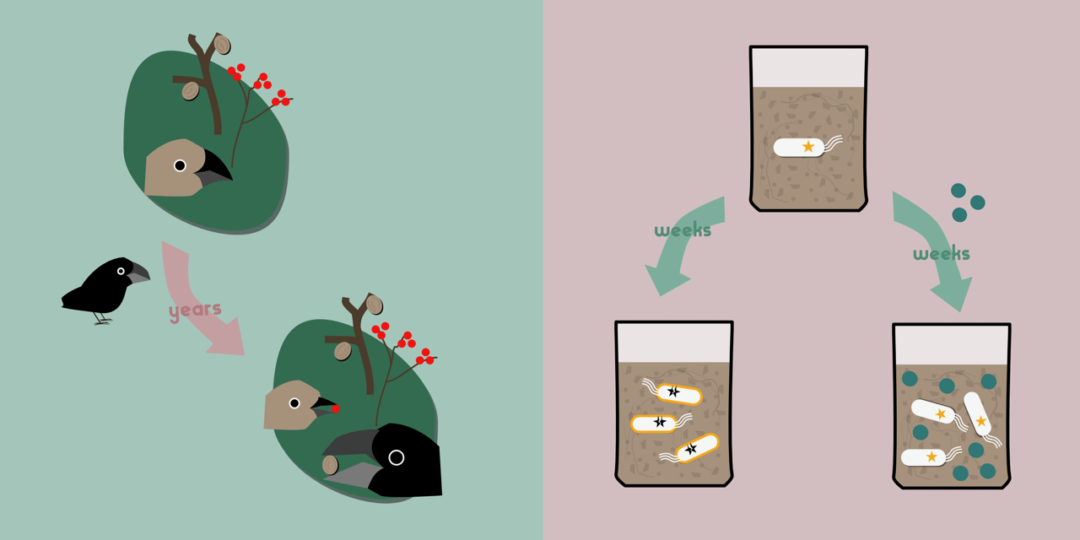A new study published in Evolution Letters has revealed widespread and unexpected differences in gene expression architecture between the sexes. Author Dr Wouter van der Bijl summarises the findings and tells us how the study came to be.
The perfect male mouse and the perfect female mouse are not the same. The sexes need to do slightly different things in life, and as consequence many traits show sexual dimorphism, where the trait differs between males and females. For example, males are typically larger than females, but females have relatively larger spleens. But how do these differences evolve? This is a trickier question than it may first seem, since males and females share almost all of their DNA. So to create male and female traits from the same genome, you need to express those genes differently.
However, most genes are expressed at the same level in both sexes. So to evolve dimorphism, you would first need to decouple the expression for a gene, and then evolve the optimal expression for males and females. This decoupling in the organization of traits has long been thought to make it very difficult for traits to become sexually dimorphic, a constraint on their evolution. But this is a little puzzling. After all, the males and females of many species look very different, so is sexual dimorphism really that hard to evolve? How much do we really know about the inner workings of male and females traits – are they really that coupled?

To learn more about these sex differences, we used data from the International Mouse Phenotyping Consortium (IMPC), an enormous project of 21 institutions that studies how genes control traits. They do this by creating so-called “knock-out” lines of mice, where they stop genes from being expressed, turning one gene off at a time, and then look at how hundreds of different traits change in response, including changes in morphology, physiology, immune function and behavior. While these data are meant to be used for medical research, we can also use them to better understand the sexes.
What we found
If a trait is organized the same way in males and females, then knocking out genes should have the same effects on that trait in both sexes. But this is not what we see. When looking across hundreds of traits and thousands of genes, we see sex differences almost everywhere. We can express these differences by calculating the correlation between what happens in the male vs what happens in the female. Averaged across traits, this correlation is only 0.65. So overall, the way that male and female traits are controlled is similar but not the same.
But perhaps that is what we should have expected? After all, male and female mice do look and behave differently. If the traits are already dimorphic, we probably shouldn’t expect them to function the same either. Surprisingly, however, whether the traits were dimorphic or not did not make a difference. When we looked at just monomorphic traits, where males and females are identical, we still see that gene knock-outs often have different effects.
This suggests that the genome is translated in two ways, even if the final outcome is the same! These hidden differences in the way that male and female traits work make us reevaluate how they evolve. Instead of having to decouple traits first, selection can change the expression of genes the same way in both sexes, and still change the dimorphism of the trait. This may help explain why sexual dimorphism is so common in nature. As it turns out, males and females are more different than we thought.
Behind the paper
This is the first (first-author) paper to be published from my post-doc with Judith Mank at UBC. Almost all the work was done in 2019, after I first arrived in Vancouver. Judith had just moved her lab from London, and while we had a lab full of excited people, the fish room was still without fish. And so we concocted a project using published data instead. Judith had been involved on a previous paper about sexual dimorphism with IMPC data, which had been focused on whether medical biologists should care about analyzing both males and females (they should). She thought there was more to be done with the data, approaching it from an evolutionary perspective. I easily get excited about large datasets, and dove right in.
The project was not without challenges. While I have briefly worked on sexual dimorphism before (as I’ve written about on this blog), this paper could hardly be more different. I very much come from a behavioral ecology background, and was not very used to thinking about genes and genetic correlations. We ended up heavily borrowing ideas and methods from quantitative genetics, which I was largely unfamiliar with. And the paper also uses methods from genomics, such as GO-terms and differential expression analysis, which were new for me.
At the beginning, it felt a bit like I was starting a second PhD, lost in unfamiliar literature and struggling with new ideas. But that is exactly what made this project fun and very useful to me. I really enjoyed learning new skills during the work that ended up in this paper, and am already applying them in my next projects. Perhaps that’s what makes for a good post-doc, the opportunity to do something totally new.
Dr Wouter van der Bijl is a post-doctoral researcher at UBC. The original article is freely available to read and download from Evolution Letters.


